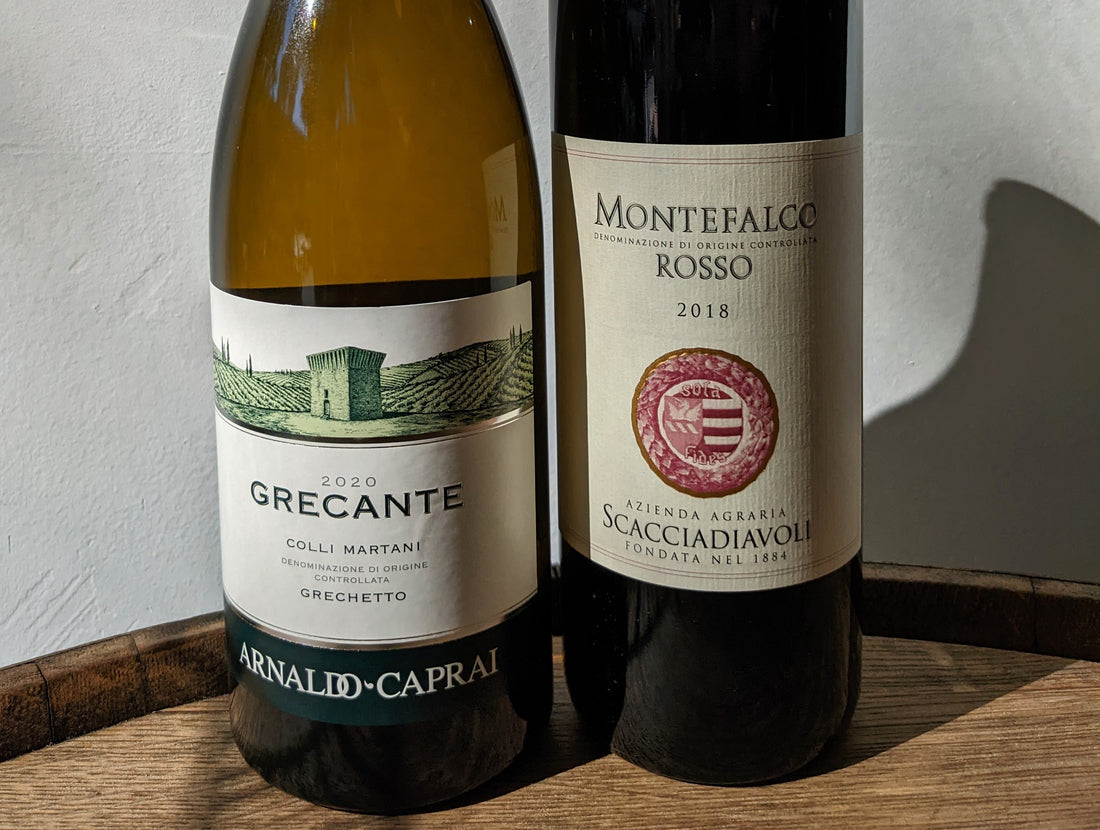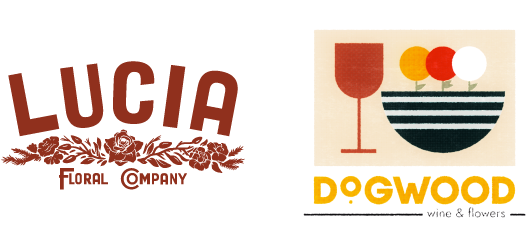
September 2022 - Umbria, Italy
September 2022
Umbria, Italy
Featuring:
Arnaldo Caprai
Scacciadiavoli
Umbria is a region often overshadowed by its neighbors. With the ever-popular Tuscany to the northwest, the metropolis of Rome to the south, and the sunny Adriatic coastline just to the east, many people are quick to skip over Umbria when they think of central Italy. But for tourists, naturalists, historians, and wine enthusiasts alike, it deserves some consideration.
Often referred to as ‘the green heart’ of the country, Umbria is a lush landlocked region known for productive agriculture - wine notwithstanding. It’s often considered one of the breadbaskets of Italy, production including specialty pastas, Umbrian Lentils, Norcina Ham, Spoleto Spelt, Regional Olive Oil, and local red potatoes. Generalizing a bit here, but it has the gastronomic privileges of both the north - heavy on dairy, meat, and fresh egg pastas with 00 flour - and the south - known for olive oil, tomatoes/vegetables, and hearty, durum wheat pastas that are usually dried. The green heart has it all!
History
Just a stone's throw from the capital of both the Ancient Roman and Modern Catholic empire, Umbria has a deep history spanning the millenia. To find the true root of Umbria, you have to go back to pre-200 BC, when it was a wild land inhabited by the Umbri people. These were ancient Italics, who lived a tribal lifestyle inhabiting hilltop villages in the region and beyond. Their kingdom spanned from just north of Bologna and San Marino to the southern borders of modern day Umbria. While their neighbors to the west and north, Etruscans and Celts respectively, are far better-known, the Umbrians occupied a larger territory and had a distinct culture and language. Many historians will casually loop ancient Umbria in with ancient Rome, but it wasn’t until roughly 200 BC, at the start of true Roman expansion, that Umbia was conquered and enveloped into the Roman empire as we know it today.
Fast forward to the 1200’s, when Ancient Rome had fallen but the Holy Roman Empire was in full-swing, the papacy had an oft-used summer-palace in the city of Perguia (Umbria’s modern-day capital). Here, between 1213 and 1305 AD, six popes were elected here in the Palazzo delle Canoniche, cementing the historical significance of Perugia, and Umbriua, for millennia.
Varieties
This leads to the nomenclature of the most important variety of Umbria, Sagrantino. First recorded in the 1500s, Sagrantino is allegedly a reference to the sacramental wine of the popes. As a variety, it is deep and moody, with the highest tannins of any Italian grape (and maybe any grape, period.). This also means it has some of the highest polyphenols and, purportedly, most health benefits! The wine, which is immensely ageable because of this, is often imbued with smoky notes alongside blackberry and cassis. Sagrantino is best cultivated in the area surrounding the town of Montefalco. The Sagrantino di Montefalco DOCG remains one of just two DOCGs in Umbria.
More often than not, however, you will find Montefalco Rosso wines on shelves and menus. These are blends of primarily Sagrantino and Sangiovese, which present a better cost proposition as well as more immediate drinkability. In general, they are easy, approachable red wines that remain quintessentially Italian. If you’re a fan of Chianti OR Napa Cab, you’re likely to be happy with Montefalco Rosso.
As far as white wines go, Grechetto would be considered the flagship white of the region. While Trebbiano spills over the borders from Tuscany, it is rarely interesting enough to warrant conversation and can be largely considered table wine. Grechetto, on the other hand, is one of the many grapes claimed by savvy Italians to be a Greek import, though there’s relatively little to support that notion. Instead, Grechetto is one of the many native varieties cultivated for millennia throughout Italy and simply marketed as Greek to increase sales for those pedaling the wine.
Grechetto finds its success mostly in Orvieto, a region that extends itself into both Umbria and Lazio, much like our own Columbia Gorge/Columbia Valley are in both OR and WA. However a number of producers find great success with the wine as a white counterpart to the Sagrantino and Sangiovese they grow in the area around Montefalco.
For the sake of thoroughness, it’s also worth mentioning the other Umbrian top-tier wine, Torgiano Rosso Riserva DOCG. This area, located just Southeast of Perugia, is known for elevated, high-toned, crystalline-expressions of Sangiovese. These can rival the best Chianti Classico Riserva. And usually for a much more agreeable price. The issue, however, is that these are not often imported into the US due to the popularity of Sangiovese grown from neighboring Tuscany. When you do see one, however, I recommend purchasing it!
Arnaldo Caprai, ‘Grecante’ Grechetto, Colli Martani DOC
This family’s history begins in 1971, when Arnaldo Caprai, a textile entrepreneur, purchased 12.5 acres in the town of Montefalco. The family quietly cultivated the land for 17 years until Arnaldo passed management of the estate to his son, Marco in 1988, four years before the DOCG of Montefalco Sangantino was founded. It was Marco’s unbridled ambition, though, that catapulted the Caprai estate into the stratosphere, rivaled in popularity and price only by natural wine maestros Paolo Baea and Milziade Antano.
Today, the Caprai family actively farms 220 acres of grapes in the region. They produce a range of wines, all stylistically polished and modern - especially when compared to many of their peers. The top tier Sagrantino’s retail for well-over $100 / bottle and can be found on many top wine lists.
This wine, ‘Grecante’, is a personal favorite of mine since my early sommelier days. Grecante is the traditional term for Grechetto-based wines during the Renaissance days. This wine is an homage to that era, with an opulent nose of peach and guava framed by notes of marzipan and freesia. Texturally, Grechetto is a wonderful wine because it has a lush and generous body while maintaining acidity and freshness. It is one of those wines that, if you tasted with your eyes closed, you may even think it is rosé rather than white. The acidity paired with the richness makes for a fantastic food wine.
Scacciadiavoli, Montefalco Rosso DOC (Sangiovese, Sagrantino, Merlot)
Founded in 1884, ‘Scacciadiavoli’ means ‘Devil Exorcist’ and was originally named after an exorcist who lived and worked in the small village neighboring the vineyard. Legend has it this exorcist used Sagrantino from these vineyards to perform his rituals. Today, the Pambuffetti owns the winery and produces roughly 20,000 cases.
The Scacciadiavoli winery sources grapes from 100 acres of vineyards and has a traditional winery built into the hillside, using largely gravity to produce their wines and move grape must from one vessel to another. Aged in a combination of large tanks and barriques, this wine is both approachable and serious. Notes of red cherry, blackberry, leather, and a touch of barbecue smoke. It has a medium body and persistent tannins. I’d drink this in the near future and grab a 100% Montefalco Sagrantino or two to age in the long-term!
